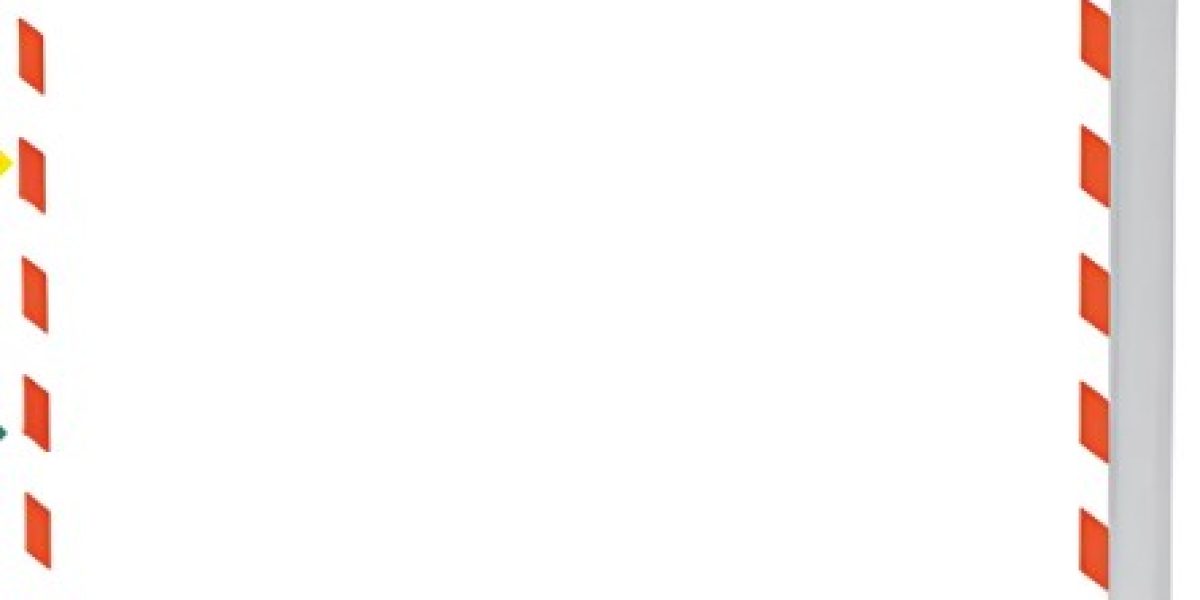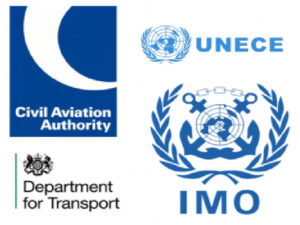It is that time of year again. There are some big changes with the battery regulations by air, but we have been provided with a 1 year implementation phase.
The 66th edition of the IATA Dangerous Goods Regulations incorporates all amendments made by the ICAO Dangerous Goods Panel in developing the content of the 2025–2026 edition of the ICAO Technical Instructions as well as changes adopted by the IATA Dangerous Goods Board. The following list is intended to assist the user to identify the main changes introduced in this edition and must not be considered an exhaustive listing. The changes have been prefaced by the section or subsection in which the change occurs.
1—Applicability
1.2.7—Exceptions—Provision has been made in 1.2.7 for data loggers and cargo tracking devices which are in use, or intended to be in use, during transport. Active devices with batteries not conforming to 1.2.7(i); and, data loggers or cargo tracking devices which are not being used for the purpose of monitoring cargo, may continue to be shipped under the relevant provision for equipment containing lithium batteries.
2—Limitations
2.3—Dangerous Goods Carried by Passengers or Crew
•The provisions for battery-powered mobility aids (2.3.2.2—2.3.2.4) and the guidance on the end-to-end processes associated with the carriage of mobility aids, has been updated.
•A note is added to 2.3.2.4.3 to clarify that where a lithium ion battery remains installed in a mobility aid, there is no Watt-hour limit. The provisions of 9.1.9 (Requirement for Safety Risk Assessment) and 1.4.2.2 (Recommendations with respect to approval of dangerous goods carried by passengers and crew) remain unchanged.
2.8.1—State Variations—The List (2.8.1.3) and List of State Variations (2.8.2) have been revised to include variations submitted by Belarus and Chile and significant changes to the variations submitted by Canada. There are minor changes among the notified variations for existing States.
2.8.3—Operator Variations—The List (2.8.3.4) and List of Operator Variations (2.8.4) have been revised to include variations submitted by Air Zimbabwe, Plus Ultra Líneas Aéreas, TAAG Angola Airlines significant changes to the variations submitted by Evelop Airways, Tianjin Airlines, Air Serbia, Lufthansa, Swiss International and amended variations for existing operators as identified by the applicable revision mark.
3—Classification
3.1.1.2 —Has been amended to align with definitions and classification in the UN Model Regulations. Corresponding terms have been removed from the glossary in Appendix A.
3.4.1.1.1.3 —The term metal powders aligns with the UN classification.
3.4.1.1.3.3 —Solids which may cause fire through friction.
3.6.2.2.2.1 —The indicative list of Category A pathogens has been amended to show monkey pox virus as being category A when in culture form only. The World Health Organization now references monkey pox virus as “mpox”.
3.9.2.5.5 —The exception for COVID-19 vaccines from the provisions of the Regulations has been modified to now apply to all pharmaceutical products, such as vaccines, that are packed in a form ready to be administered, including those in clinical trials.
3.9.2.7 —Includes the classification criteria for sodium ion batteries.
4—Identification
4.2—List of Dangerous Goods
The amendments to the list of dangerous goods includes the following new entries:
•UN 0514, Fire suppressant dispersing devices, Division 1.4S;
•UN 3559, Fire suppressant dispersing devices, Class 9;
•UN 3554, Gallium contained in manufactured articles;
•UN 3551, Sodium ion batteries;
•UN 3552, Sodium ion batteries contained in equipment;
•UN 3552, Sodium ion batteries packed in equipment;
•UN 3556, Vehicle, lithium ion battery powered;
•UN 3557, Vehicle, lithium metal battery powered; and,
•UN 3558, Vehicle, sodium ion battery powered.
4.4—Special Provisions
The amendments to special provisions include:
•A40—to expand the application of liquid desensitized explosives in Class 3;
•A69—to include reference to gallium;
•A88, A99, A146 and A154—to apply to sodium ion batteries;
•A107—to permit apparatus, articles or equipment containing dangerous goods to contain up to 5 L and/or 5 kg of environmentally hazardous substances;
•A144—to make clear that the appropriate aircraft limitation is “passenger and cargo aircraft” when the special provision is being exercised;
•A185 and A214—to incorporate reference and requirements for the new entries of vehicles powered by lithium ion batteries, lithium metal batteries and sodium ion batteries; and,
•A190—to clarify that Special Provision A2 does not apply to neutron radiation detectors shipped in accordance with A190.
New special provisions include:
•A226—permitting the continuation of the term Detonators, electric until 30 June 2025;
•A228—clarifies the classification differences between sodium ion cells and batteries with an organic electrolyte and and those batteries with an aqeous alkali electrolyte;
•A230—excludes nitrocellulose membrane filters, manufactured to a particular standard, from the provisions of the dangerous goods regulations;
•A231—excludes vehicles powered by sodium ion batteries from the provisions of the dangerous goods regulations, providing there are no other dangerous goods which are subject to the regulations, and the battery is short circuited to reduce the charge in the battery to zero;
•A232—assists in the classification of fire suppressant dispersing devices between Division 1.4S and Class 9; and,
•A233—assists in the classification of tetramethylammonium hydroxide.
5—Packing
Packing Instructions
5.2.0.8 —Amended with regard to protecting the valves of cylinders and closed cryogenic receptacles, including reference to design standards for shrouds, permanent protective attachments and valves for non-refillable cylinders.
5.2.0.11 —Includes clarification when calculating the Q value, that the quantities from the relevant packing instructions are to be consistent with regard to the intended aircraft type.
PI 200 , PI 202 , and PI 218 —Have had minor updates to be consistent with formatting. Table 200.B has been modified for UN 1010 Butadienes and hydrocarbon mixture, stabilized.
PI 372 —Relates to UN 3165 Aircraft hydraulic power unit fuel tank and has been modified to reflect the relevant general requirements that must be met.
PI 378 , PI 492 , PI 950 and PI 951 —Have been revised, with the broadening of sodium batteries to reference metallic sodium batteries and sodium alloy batteries (these are different to UN 3551 sodium ion cells and batteries).
PI 650 —The language regarding the capability of passing a 1.2 m drop test has been modified to remain consistent with the UN. Having regard to patient confidentiality, provision has been made for alternative means of providing the name and address of the shipper and/or consignee.
PI 866 —Has been amended to clearly require that packagings must meet Packing Group II performance standards.
PI 869 —Has been broadened to include UN 3554, Gallium contained in manufactured articles.
PI 952 —Has been amended to also encompass:
•UN 3556, Vehicle, lithium ion battery powered;
•UN 3557, Vehicle, lithium metal battery powered; and,
•UN 3558, Vehicle, sodium ion battery powered.
For 1 January-31 December 2025,it is recommended that the batteries are at a State of Charge (SoC) not exceeding 30%, or have an indicated battery capacity not exceeding 25%.
After 31 December 2025 these restrictions will become mandatory for vehicles with batteries that exceed 100 Wh.
PI 955 —Has been amended to include UN 2990 and UN 3072, life saving appliances, to provide for sodium ion batteries.
PI 961 —Now includes the new UN 3559, Fire suppressant dispersing devices.
PI 965 and PI 966 —Both packing instructions have several notes added to reiterate that batteries shipped at a reduced SoC are less prone to thermal runaway. The 30% SoC restriction on lithium batteries in PI 965, will be extended into PI 966, initially as a recommendation in 2025, and becoming mandatory in 2026 for batteries with a Wh rating > 2.7 Wh. Provision has been made for State Approvals where the shipper wishes to offer these batteries for transport at an SoC>30%. There will not be a provision to ship cells or batteries at an SoC>30% under Section II of PI 966. These will have to be offered in accordance with Section I.
PI 967 —Has been revised to introduce the recommendation that batteries contained in equipment should not be offered with an SoC>30% or an indicated battery capacity exceeding 25%.
The three packing instructions for sodium ion batteries, containing organic electrolyte generally mirror the respective lithium ion battery packing instructions:
•PI 976 – UN 3551, Sodium ion cells and batteries;
•PI 977 – UN 3552, Sodium ion batteries packed with equipment; and,
•PI 978 – UN 3552, Sodium ion batteries contained in equipment.
6—Packaging Specifications and Performance Tests
6.2 —Contains several amendments that align with the UN on rolling hoops for drums.
6.4 —Contains numerous updates to the referenced international standards for the construction and testing of cylinders and closed cryogenic receptacles.
There are a number of notes included throughout Section 6 which make provision to continue using cylinders etc., manufactured and marked in accordance with the 63rd edition of the DGR.
7—Marking and Labelling
7.1.5.5 —The lithium battery mark has been renamed as the battery mark.
7.3.18.2 —The lithium battery label has been renamed as the lithium battery or sodium ion battery label.
8—Documentation
8.1.6.9.1 —A note has been added regarding a transitional period for UN 3171, Battery powered vehicle, to continue to include vehicles powered by lithium batteries until 31 March 2025.
8.2.1 —The note relating to the transitional period (until December 2024) for the dangerous goods statement on the air waybill has been removed.
9—Handling
9.1.3 —Note 3 has been modified to clarify that operators may develop and use their own checklists.
Tables 9.1.A and 9.5.A —Have been modified to include the sodium ion battery either packed with, or contained in equipment in Section II.
9.3.11 —Has been modified to recommend caution when handling cryogenic liquids, especially during loading and unloading.
10—Radioactive Materials
10.7.1.4 —Has been amended to reflect the marking of an overpack when UN 1845, Carbon dioxide, solid, has been included in a consignment with material meeting the classification and transport requirements of Section 10.
Appendices
Appendix A—There are many changes to the defined terms shown in the Glossary.
Appendix B—The IMP codes for ELI, RBI and RLI have been amended to also apply to sodium ion batteries.
Appendix C—There are additions to the list of currently assigned self-reactive substances on Division 4.1 in Table C.1 and to the list of organic peroxides in Table C.2 .
Appendix D—Contact details for competent authorities have been updated.
Appendices E and F—Have been modified to enable a more responsive approach to finding and listing particular product and service providers.




